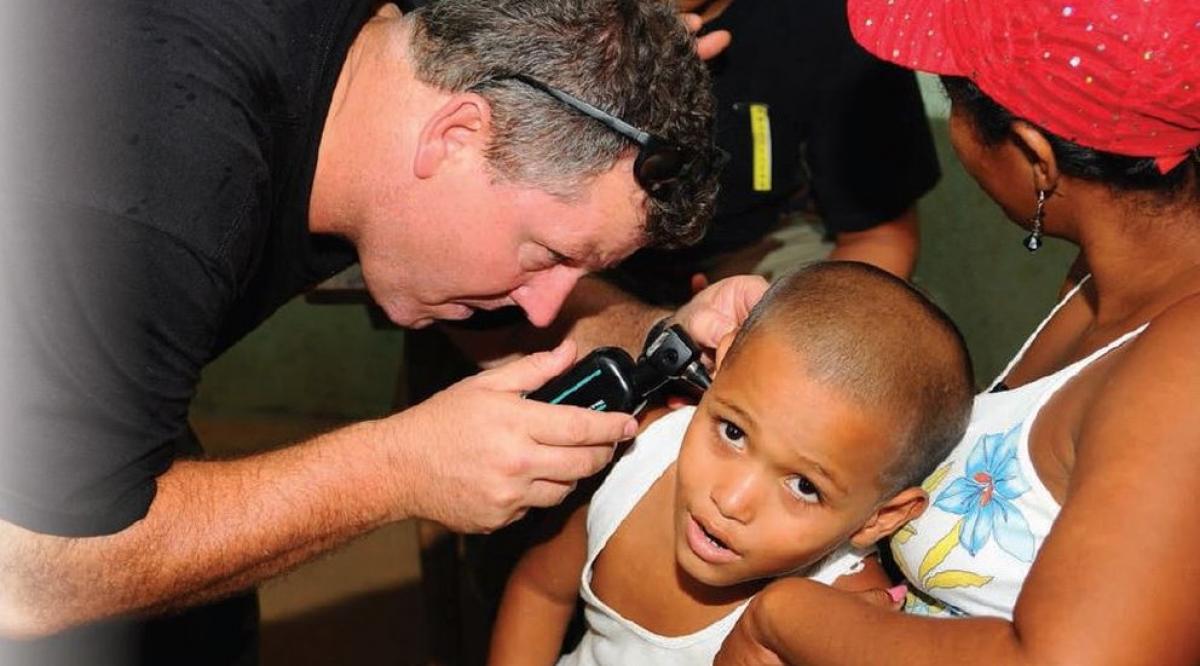Editor’s Note: Throughout 2015, an AAMCNews series explored how medical schools and teaching hospitals are addressing social determinants of health in their communities through research, clinical care, and education.
The opportunity to help people in their communities was a compelling factor in the decision of John Nixon, MD, to enroll at Rush Medical College. During his first year of medical school, he was one of the student volunteers who drove more than two dozen outreach efforts in the Rush Community Service Initiatives Program (RCSIP).
Nixon, who graduated in May, made his mark in his second year when he founded a new RCSIP program, dubbed “5+1=20.” The initiative seeks to help youth deepen their understanding of five health challenges—asthma, diabetes, hypertension, high blood pressure, and HIV—that are particularly common in Chicago’s disadvantaged communities.
The premise is that one informed young person can share knowledge about these conditions and help community members increase their life expectancy, which can be up to 20 years shorter for those who are uninsured or underinsured. “We show the kids that just because people in their community don’t have health insurance doesn’t mean we can’t do something about their health,” Nixon said.
Indeed, a growing body of evidence documents that community-based service-learning can increase medical students’ awareness and understanding of the social determinants of health. Service-learning, as defined by the Liaison Committee on Medical Education, is a structured learning experience that combines community service with preparation and reflection.
An overview published in 2014 in the International Journal of Medical Education stated that service learning helps medical students gain clinical knowledge; hone their leadership, collaboration, and communication skills; identify health needs in underserved communities; and “has the potential to strengthen campus-community relations and improve the lives of the underserved.”
Benefits for both students and the community
Service-learning takes many forms. At Rush, Marilyn Wideman, DNP, RN, associate provost for professional education and community engagement, noted that RCSIP is both student and community centered, giving students rich learning experiences that help them develop leadership skills while providing exposure to populations they may not encounter during their clinical placement.
A 2014 survey found that at least 90 percent of RCSIP student participants said their community work reinforced learning acquired in the classroom or gained in clinical training. Another benefit of service learning is that students gain experience in how to work interprofessionally.
“We show the kids that just because people in their community don’t have health insurance doesn’t mean we can’t do something about their health.”
John Nixon, MD, Rush Medical College
“In the outcome data we collect, students say that RCSIP increases their understanding of the roles of other disciplines and their ability to work in teams, toward common goals, and helps them communicate more effectively,” Wideman said. As Nixon’s experience suggests, the program also gives the university a tool for attracting top medical students.
At Boston University School of Medicine, a program called PAIRS (Partnering in Alzheimer’s Instruction Research Study) teams medical students with patients who have early stage Alzheimer’s disease and other cognitive impairments. Established in 2007, PAIRS was the first program to replicate the successful Buddy Program developed in 1998 at Northwestern University Feinberg School of Medicine. That model enables first-year medical students to develop relationships with early-stage Alzheimer’s patients and their families outside of the clinical setting.
Angela Jefferson, PhD, an associate professor of neurology at Vanderbilt University, spearheaded development of the PAIRS program while she was on the faculty at Boston University School of Medicine. Her research with colleagues, published in a 2012 issue of BMC Medical Education, found that PAIRS deepens participants’ understanding of Alzheimer’s disease and its impact on patients, caregivers, and families. The program also helps students sharpen their skills in communicating with older adults. “[PAIRS] provides a platform for teaching and education that is outside of the box in many ways,” said Jefferson. “It’s basically taking an educational opportunity and putting it into a real-world environment.”
Morehouse School of Medicine requires first-year students to take a yearlong community health course (CHC) where they identify a local health need and develop appropriate interventions. Ijeoma Azonobi, MD, MPH, director of undergraduate medical education in the Department of Community Health and Preventive Medicine, said the CHC helps students learn first-hand to deal with the reality that “our patients are underemployed, poorly educated, don’t have access to appropriate foods and nutrition, and live in neighborhoods where safety can be an issue.”
The CHC is a flagship program for the Morehouse mission to help the underserved and achieve health equity by producing community-oriented physicians, Azonobi noted. “The program is equally as much about the community as it is about experiences for our students,” he said. “The CHC helps us create the kind of physicians we are seeking to produce.”
A 2010 analysis published in Academic Medicine suggested that the CHC provides medical students with requisite knowledge and skills for assessing community health, as well as a channel for working with community partners to improve health. The study pointed out that the CHC also helps medical students understand the economic, social, and cultural factors that have an impact on health.
While studies have documented the benefits of service- learning for medical students, there is appreciably less hard data about the impact on communities, however. Volunteer opportunities in RCSIP are based on needs determined through health assessments, focus groups, surveys, and one-on-one interviews, but Wideman said the Rush program is planning to conduct focus groups with community residents to learn their views of problems and potential solutions. That type of research is imperative to know what the community wants, Wideman said, “so that we can be a true partner versus just doing what we think is a good idea.”
This article originally appeared in print in the June 2015 issue of the AAMC Reporter.
